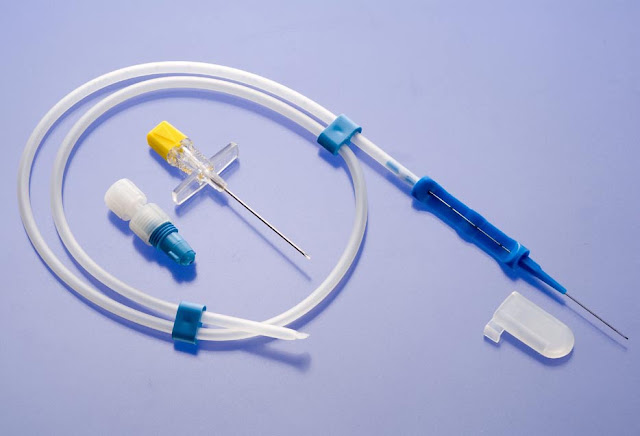Antimicrobial Catheter Are Used Extensively In Critically Ill Patients For Hemodynamic Monitoring, Administration Of Fluids, Blood Liquid Purification, And Parenteral Nutrition Support
 |
| Antimicrobial Catheter |
Catheters are used for long-term treatment of urological problems and are associated with an increasing number of infections. Urinary catheter-associated urinary tract infection (CAUTI) is a leading cause of nosocomial infections in hospitalized patients. Infections caused by catheters are predominantly due to the formation of pathogen biofilms that protect the microorganisms from host immune defence and antibiotics.
Central venous
catheters (CVC) are necessary for the care of these patients, the insertion and
use of CVCs is associated with significant morbidity, including infections.
These infections are preventable. The most common infection is a
catheter-related bloodstream infection (CRBSI).
The use of hydrophilic single-use catheters significantly
reduces the risk of complications. However, catheter-related bacteremia remains
a significant source of morbidity and mortality in hemodialysis patients.
Catheters that
are coated or impregnated with antimicrobial or antiseptic agents decrease the
rate of BSI compared with uncoated catheters; however, the cost of these
catheters is considerably higher.
Several studies have shown that the use of Antimicrobial
Catheter lock solutions significantly decreases the frequency and
severity of CAUTI. However, the use of these products is not routine in the
United States.
Amongst catheters, intermittent catheters are the most
commonly used type and are attached to a drainage bag. These catheters are
inserted and removed by healthcare professionals. Depending on the reason for
use, a patient may need an intermittent catheter to drain urine only a few
times or several times a day. Alternatively, a patient may have incontinence
and need a condom catheter. This type of catheter is placed over the penis and
leads to a drainage bag.
The development of modern medical knowledge and technology
enables physicians to treat critically ill patients with severe diseases that
were once incurable. However, the invasive nature of indwelling intravascular
and urinary catheters significantly increases the risk of iatrogenic infection.
These infections are a leading cause of morbidity and mortality in hospitalized
patients. In particular, central venous and urinary catheters are two of the
most commonly inserted medical devices, as they are also among the most common
causes of nosocomially acquired bloodstream infections. The vast majority of
infections arising from catheters are associated with the device itself.
Shockwave M5+ peripheral
intravascular lithotripsy catheter was launched by Shockwave Medical in March
2022. It has received clearance from the US FDA and the CE mark.



Comments
Post a Comment